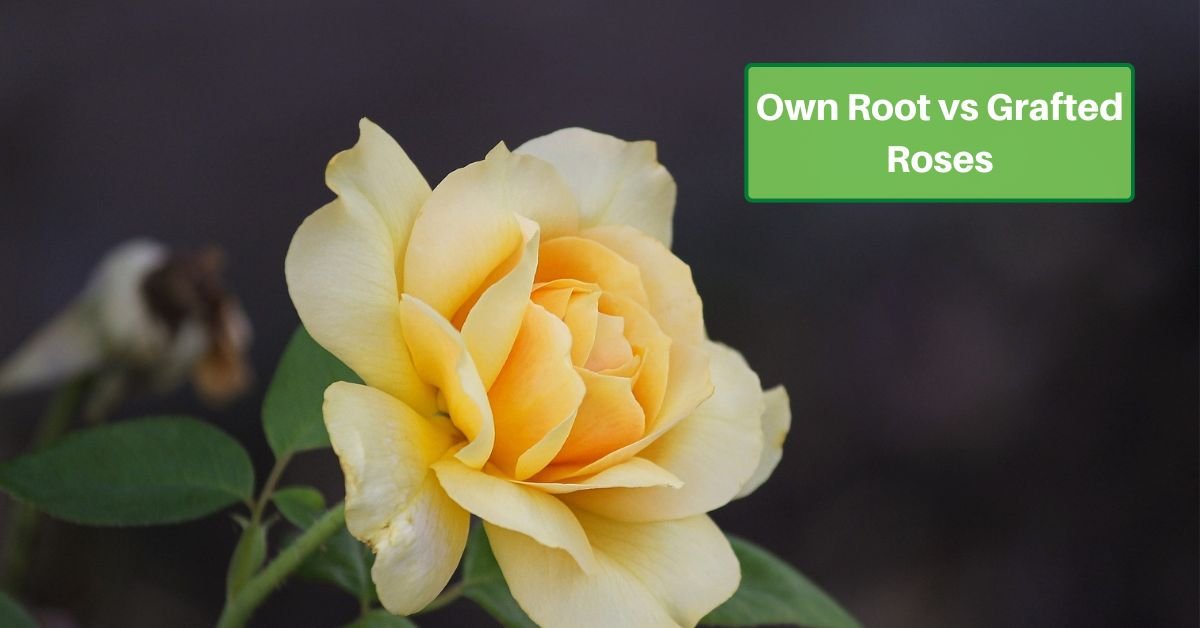A rose by any other name may smell as sweet, but there are several differences between roses grown from their own roots and grafted ones. Both may be beautiful, but for the long-term success of your garden, it’s a good idea to know what each offers you.
What Are Own-Root Roses
Own-root Roses are the most “natural” type of rose plant. They are plants that start with and grow from their natural root systems.
From bottom to top, any single plant is genetically the same.
What Are Grafted Roses
Grafted roses combine two plants. A cutting from one rose bush is grafted onto the root system of a different plant.
This combination lets the roots of one type of rose pass nutrition to another.
There is no genetic modification. It’s not a hybrid, either. Instead, one plant’s roots support another’s growth. But the flowering part is of different genetic stock than the roots.
Commercially available rose plants are often grafts. But in general, the plant’s packaging does not tell you this. However, you can see it for yourself: a grafted plant will have a knot above the root cluster where the graft took place.
Pros and Cons of Own-root Roses
Roses grown from their own roots can live half a century or more. They grow slowly but stay strong over the years as long as they’re properly cared for.
Some varieties are naturally hardy, while others are more delicate. Depending on where you live, that may limit the type of roses you can successfully grow. Certain types won’t endure extreme weather.
Pros and Cons of Grafted Roses
Grafted roses mature more quickly than own-root roses. That’s one of the main reasons that commercial distributors prefer them – they can get them to market faster.
They also let many gardeners grow types of roses in their gardens that couldn’t otherwise survive in local conditions. That means there are a lot of beautiful colors and shapes of roses you wouldn’t otherwise see.
On the other hand, remember that the root system is still from another type of plant, and it’s still going to try growing that type of rose. For a year or two, the grafted species may thrive.
But after that, it may face competition from the root species. Suckers may start to sprout. You may see two types of roses competing with each other, and even see both of them flowering. To slow that, you have to do a lot of careful pruning.
Over time, though, the root system will win out and you’ll get a different type of rose than you expected.
Because of this mix, grafted rose plants normally only last 15 years or so. What you gained in initial hardiness, you lose in longevity.
Which To Choose
Both own-root roses and grafted roses have certain advantages.
Grafted roses let you have species in your garden that might not otherwise thrive in your area. They also grow more quickly than own-root roses. That may mean that prices are also lower because it’s less work to get them to market.
Own-root roses, on the other hand, live much longer on average. They still require careful pruning, but they stay “true” and always grow the same type of roses.
Both can be beautiful, healthy plants, and both also have drawbacks. Ultimately, it depends on what you want to have, how much time you’re willing to invest, and how much you want to pay to get the roses you want.









